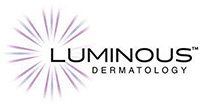About Vascular Birthmarks
What are they?
Birthmarks are common. Research shows that about 10% of babies are born with a type of birthmark known as hemangioma (he-man-gio-ma). Vascular malformations are benign (non-cancerous) lesions, are present at birth and grow with the child. They do not have a rapid growth cycle and then suddenly stop growing, they continue to slowly grow throughout life. Birthmarks vary in size and can range in color from brown to blue to shades of red or pink. Although in some children a birthmark is a minor flaw that they can live with, some children with a birthmark will require treatment.
What causes them?
Currently, there are no known causes or risk factors for developing vascular birthmarks. Some initial research shows a potential genetic link, but this is inconclusive at this time.
Common treatments
Not every person or birthmark is the same. When you come to see one of our highly trained doctors you will get a personalized treatment catered to your specific needs. We will determine which method is the best to remove birthmarks and how we can minimize scarring. We may use a laser, IPL, or standard removal to remove your birthmark. When you come in for a consultation, we will assess you and provide our treatment recommendation.


